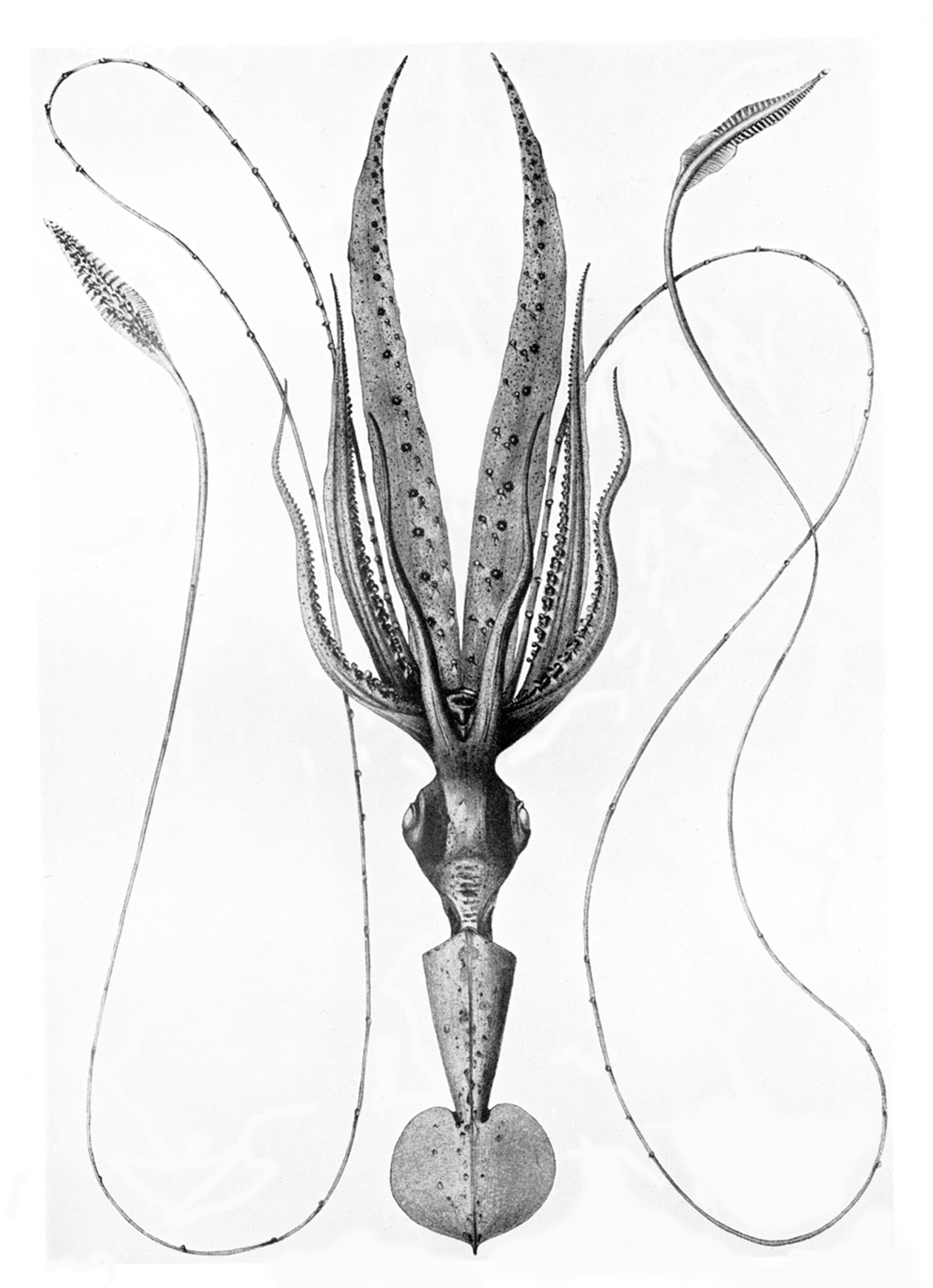|
Cranchia
''Cranchia scabra'' is a species of glass squid. It is the only species in the genus, and is fairly small (about 150 mm). The mantle is covered by large, multi-pointed cartilage Cartilage is a resilient and smooth type of connective tissue. In tetrapods, it covers and protects the ends of long bones at the joints as articular cartilage, and is a structural component of many body parts including the rib cage, the neck an ...nous tubercles. When disturbed, the squid often pulls its head and arms into the mantle cavity and folds its fins tightly against the mantle to form a turgid ball. The tubercules, presumably, provide some type of protection, but it is unclear what predators are affected and how. In addition, the squid may ink into the mantle cavity, making the ball opaque. This was thought to be an aberrant behavior due to stress and confinement of shipboard aquaria until the same inking behavior was seen in cranchiids from submersibles. The function of this behavior ... [...More Info...] [...Related Items...] OR: [Wikipedia] [Google] [Baidu] |
Glass Squid
The family (biology), family Cranchiidae comprises the approximately 60 species of glass squid, also known as cockatoo squid, cranchiid, cranch squid, or bathyscaphoid squid. Cranchiid squid occur in surface and midwater depths of open oceans around the world. They range in mantle (mollusc), mantle length from to over , in the case of the colossal squid. The common name, glass squid, derives from the Transparency (optics), transparent nature of most species. Cranchiid squid spend much of their lives in partially sunlit shallow waters, where their transparency provides camouflage. They are characterised by a swollen body and short arms, which bear two rows of Sucker (cephalopod anatomy), suckers or hooks. The third cephalopod arm, arm pair is often enlarged. Many species are Bioluminescence, bioluminescent organisms and possess light organs on the undersides of their cephalopod eye, eyes, used to cancel their shadows. Eye morphology varies widely, ranging from large and circular ... [...More Info...] [...Related Items...] OR: [Wikipedia] [Google] [Baidu] |
William Elford Leach
William Elford Leach Royal Society, FRS (2 February 1791 – 25 August 1836) was an English zoologist and marine biologist. Life and work Elford Leach was born at Hoe Gate, Plymouth, the son of an attorney. At the age of twelve he began a medical apprenticeship at the Royal Devon and Exeter Hospital, Devonshire and Exeter Hospital, studying anatomy and chemistry. By this time he was already collecting marine animals from Plymouth Sound and along the Devon coast. At seventeen he began studying medicine at St Bartholomew's Hospital in London, finishing his training at the University of Edinburgh before graduating Doctor of Medicine, MD from the University of St Andrews (where he had never studied). From 1813 Leach concentrated on his zoological interests and was employed as an 'Assistant Librarian' (what would later be called Assistant Keeper) in the Natural History Museum, London, Natural History Department of the British Museum, where he had responsibility for the zoological ... [...More Info...] [...Related Items...] OR: [Wikipedia] [Google] [Baidu] |
Georg Johann Pfeffer
Georg Johann Pfeffer (1854–1931) was a German zoologist, primarily a malacologist, a scientist who studies mollusks. Pfeffer was born in Berlin. In 1887 he became curator of the , which was established in 1843 and destroyed during World War II. Pfeffer's published writings were mainly about cephalopods. The World Register of Marine Species database lists 133 marine taxa named by Pfeffer When Pfeffer's name is listed as an authority for a taxon such as the land snail genus ''Lamellaxis'' Strebel & Pfeffer, 1882, his name is ''not'' simply an orthographic error for the more commonly encountered molluscan authority Pfeiffer, i.e. Ludwig Karl Georg Pfeiffer, who lived 50 years earlier, from 1805 to 1877. Georg Johann Pfeffer also studied amphibians and reptiles, naming several new species. Two species of reptiles are named in his honor, ''Calamaria pfefferi Pfeffer's reed snake, ''Calamaria pfefferi'', is a species of dwarf snake in the family Colubridae. The spe ... [...More Info...] [...Related Items...] OR: [Wikipedia] [Google] [Baidu] |

